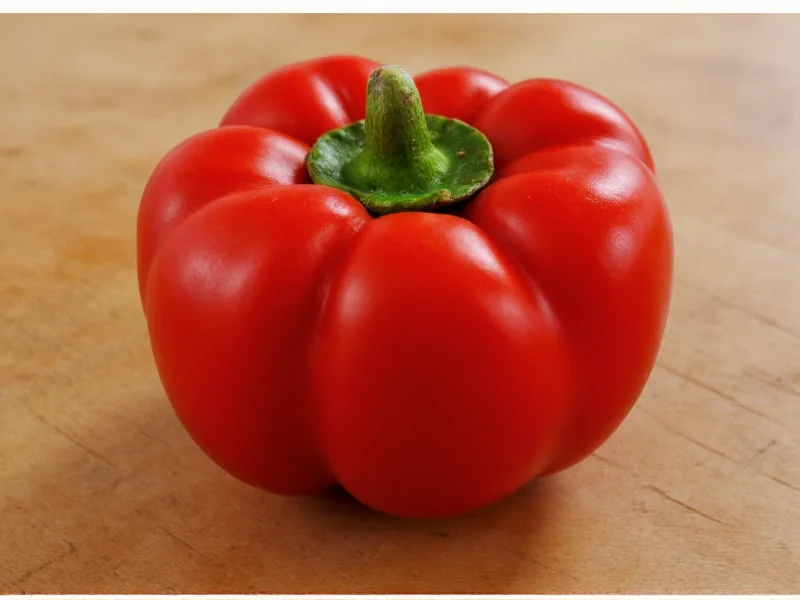The best paprika substitutes depend on which type you're replacing: For sweet paprika, use tomato paste + a pinch of cayenne; for smoked paprika, try chipotle powder diluted with sweet paprika alternatives; for hot paprika, combine sweet paprika with cayenne pepper. Each substitute requires specific ratios to match flavor profiles accurately.
Running out of paprika mid-recipe doesn't have to ruin your cooking plans. Whether you need a quick pantry replacement or have dietary restrictions requiring alternatives, understanding proper paprika substitutes ensures your dishes maintain their intended flavor profile. This comprehensive guide details effective replacements for sweet, smoked, and hot paprika varieties with precise measurements and usage tips.
Understanding Paprika Varieties Before Substituting
Paprika isn't a single uniform spice—it comes in distinct varieties that serve different culinary purposes. Recognizing which type you need to replace is crucial for selecting the right substitute:
- Sweet paprika: Mild, slightly sweet flavor with vibrant red color (most common variety)
- Smoked paprika: Made from smoked peppers, adds deep smoky notes (comes in sweet or hot varieties)
- Hot paprika: Contains spicy pepper varieties for heat without overwhelming smokiness
Mistaking one variety for another when substituting leads to disappointing results. Your substitution strategy must match both the flavor profile and color requirements of your recipe.
Best Substitutes for Sweet Paprika
When your recipe calls for standard sweet paprika, these alternatives work best:
Tomato Paste + Cayenne Combination
This kitchen staple substitute provides both color and balanced flavor. Use 1 tablespoon tomato paste plus 1/8 teaspoon cayenne pepper to replace 1 teaspoon sweet paprika. The tomato paste delivers rich red color while the cayenne adds subtle warmth without overpowering heat.
Cumin and Red Pepper Flakes Blend
For Mediterranean or Middle Eastern dishes, combine 1/2 teaspoon ground cumin with 1/4 teaspoon crushed red pepper flakes per teaspoon of paprika needed. This alternative works particularly well in stews and roasted vegetable preparations where earthy notes complement the dish.
| Substitute | Ratio (per 1 tsp paprika) | Best Used In | Flavor Notes |
|---|---|---|---|
| Tomato paste + cayenne | 1 tbsp + 1/8 tsp | Chili, soups, sauces | Sweet with mild heat |
| Cumin + red pepper flakes | 1/2 tsp + 1/4 tsp | Stews, roasted vegetables | Earthy with subtle heat |
| Pimento powder | 1:1 replacement | Deviled eggs, dips | Milder, fruitier alternative |
| Cayenne + turmeric | 1/4 tsp + 1/8 tsp | Meat rubs, marinades | Spicy with golden hue |
Replacing Smoked Paprika Successfully
Smoked paprika's unique flavor presents the biggest substitution challenge. These alternatives deliver comparable smoky depth:
Chipotle Powder Dilution Method
Chipotle powder provides intense smokiness but is significantly hotter than smoked paprika. Create a balanced substitute by mixing 1/4 teaspoon chipotle powder with 3/4 teaspoon sweet paprika alternative (like the tomato paste mixture). This maintains smoky notes while controlling heat levels. For recipes requiring 1 teaspoon smoked paprika, use this blend plus 1/2 teaspoon water to match consistency.
Liquid Smoke Technique
When minimal heat is acceptable, combine regular paprika substitute with liquid smoke. Add 1-2 drops of liquid smoke per teaspoon of paprika replacement. This method works particularly well in barbecue sauces and bean dishes where subtle smokiness enhances without dominating.
Substituting for Hot Paprika
Hot paprika delivers moderate heat with distinctive pepper flavor. These alternatives maintain the intended spiciness:
Sweet Paprika and Cayenne Blend
The most accurate replacement combines existing sweet paprika substitute with cayenne pepper. For each teaspoon of hot paprika required, use 3/4 teaspoon sweet paprika substitute plus 1/4 teaspoon cayenne. This maintains the characteristic Hungarian paprika heat level without introducing unwanted smokiness.
Crushed Red Pepper Alternative
When cayenne isn't available, crushed red pepper flakes work in a pinch. Use half the amount called for (1/2 teaspoon crushed red pepper replaces 1 teaspoon hot paprika) since flakes contain seeds that increase heat intensity. Bloom in oil first to distribute heat evenly throughout your dish.
Measurement Conversion Guidelines
Precise measurements make or break successful substitutions. Follow these conversion principles:
- Color-focused recipes (deviled eggs, dips): Prioritize tomato-based substitutes for visual appeal
- Heat-sensitive dishes (soups, sauces): Start with 50% of recommended substitute amount, then adjust
- Dry rub applications: Increase substitute quantity by 25% to compensate for moisture differences
- Long-cooking recipes: Add substitutes during last 15 minutes to preserve flavor integrity
Common Substitution Mistakes to Avoid
Even experienced cooks make these paprika substitute errors:
- Using straight cayenne as 1:1 replacement (creates excessive heat)
- Substituting chili powder without adjusting for garlic/onion content
- Adding liquid substitutes to dry rubs without compensating for moisture
- Using smoked alternatives in dishes requiring sweet paprika's mild flavor
- Not tasting and adjusting after initial substitution
Remember that paprika primarily contributes color and subtle flavor rather than intense heat. Successful substitutes maintain this delicate balance rather than overwhelming your dish.
Storage Tips for Paprika Substitutes
Unlike commercial paprika which maintains potency for 2-3 years, homemade substitutes require special storage:
- Tomato-based mixtures should be used within 24 hours or frozen in ice cube trays
- Dry spice blends keep for 6 months in airtight containers away from light
- Liquid smoke additions reduce shelf life—consume within 3 days
- Refrigerate any substitute containing fresh ingredients immediately
For best results, prepare only the amount needed for your current recipe rather than making large batches of substitutes.
Recipe-Specific Substitution Recommendations
Tailor your paprika replacement to your specific dish:
- Goulash: Use sweet paprika substitute with additional caraway seeds
- Paella: Prioritize saffron-infused alternatives for authentic color
- BBQ Rubs: Combine smoked paprika substitute with brown sugar
- Deviled Eggs: Tomato paste mixture provides perfect color without heat
- Roasted Vegetables: Cumin-based substitute enhances earthy flavors
Understanding your recipe's flavor profile helps select the most appropriate alternative that complements rather than competes with other ingredients.











 浙公网安备
33010002000092号
浙公网安备
33010002000092号 浙B2-20120091-4
浙B2-20120091-4